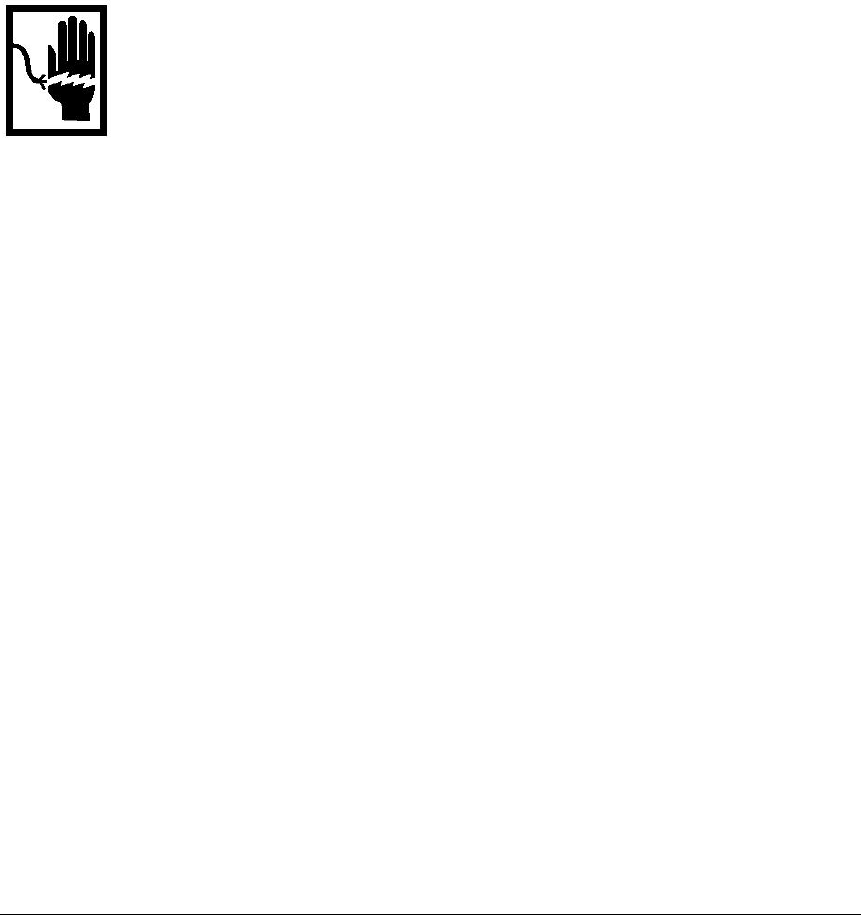
SAFETY INFORMATION
The following safety information is provided as a guideline to help you operate your new welder under
the safest possible conditions. Any equipment that uses electrical power can be potentially dangerous
to use when safety or safe handling instructions are not known or not followed. The following safety
information is provided to give you the information necessary for safe use and operation.
When a WARNING precedes a procedure step, it is an indication that the step contains a procedure
that might be injurious to a person if proper safety precautions are not heeded. When a procedure
step is preceded by a CAUTION, it is an indication that the step contains a procedure that might
damage the equipment being used. A NOTE may be used before or after a procedure step to highlight
or explain something in that step.
READ ALL SAFETY INSTRUCTIONS CAREFULLY before attempting to install, operate, or service
this welder. Failure to comply with these instructions could result in personal injury and/or property
damage.
Published standards on safety are available. They are listed in ADDITIONAL SAFETY
INFORMATION at the end of this SAFETY SUMMARY. The National Electrical Code, Occupational
Safety and Health Act regulations, local industrial codes and local inspection requirements also
provide a basis for equipment installation, use, and service.
SHOCK HAZARDS
WARNING
Electric shock can kill! To reduce the risk of death or serious injury from shock, read,
understand, and follow the following safety instructions. In addition, make certain that
anyone else who uses this welding equipment, or who is a bystander in the welding
area understands and follows these safety instructions as well.
IMPORTANT! TO REDUCE THE RISK OF DEATH, INJURY, OR PROPERTY
DAMAGE, DO NOT ATTEMPT OPERATION of this welding equipment until you have
read and understand the following safety summary.
• Do not, in any manner, come into physical contact with any part of the welding current circuit.
The welding current circuit includes: a. the work piece or any conductive material in contact
with it, b. the ground clamp, c. the electrode or welding rod, d. any metal parts on the
electrode holder.
• Do not weld in a damp area or come in contact with a moist or wet surface.
• Do not attempt to weld if any part of clothing or body is wet.
• Do not allow the welding equipment to come in contact with water or moisture.
• Do not drag welding cables, wire feed gun, or welder power cord through or allow them to
come into contact with water or moisture.
• Do not touch welder, attempt to turn welder on or off if any part of the body or clothing is moist
or if you are in physical contact with water or moisture.
• Do not attempt to plug the welder into the power source if any part of body or clothing is
moist, or if you are in physical contact with water or moisture.
• Do not connect welder ground clamp to or weld on electrical conduit.
• Do not alter power cord or power cord plug in any way.
• Do not attempt to plug the welder into the power source if the ground prong on power cord
plug is bent over, broken off, or missing.
• Do not allow the welder to be connected to the power source or attempt to weld if the welder,
welding cables, welding site, or welder power cord are exposed to any form of atmospheric
precipitation, or salt water spray.
• Do not carry coiled welding cables around shoulders, or any other part of the body, when they
are plugged into the welder.
• Do not modify any wiring, ground connections, switches, or fuses in this welding equipment.
3


















